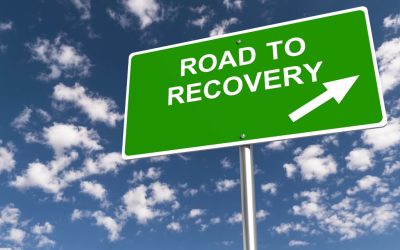How Long Does it Take to Break the Habit of Addiction?

EL GOBIERNO DE LA PROVINCIA Y LA EMPRESA SAMSUNG LANZARON EL INNOVATION CAMPUS EN TIERRA DEL FUEGO
22 junio, 2021
AREF IMPLEMENTA HERRAMIENTAS EN POS DE AYUDAR A LA REACTIVACIÓN DEL SECTOR PRIVADO Y LA ECONOMÍA LOCAL
23 junio, 2021Content
When used as part of MAT, these medications can be very helpful in long-term opioid recovery. If you have an alcohol use disorder, you should begin with medical detox. Supervision from a physician will be needed; do not simply stop drinking on your own. “We are literally surrounded by people who are in recovery from a substance-use disorder, but we don’t know it,” Kelly said.
As previously discussed, recovery is a dynamic process that makes changing demands over time in terms of coping strategies and can thus be stressful. Social support has several benefits that may contribute to the recovery process over time. For example, social support has been found to buffer stress (e.g., Taylor and Aspinwall, 1996).
Addiction’s Impact on Cognitive Function and Brain Health
This can also occur with behavioral addictions involving activities such as eating, sex, gambling, shopping, and exercise. Withdrawal symptoms such as severe depression can lead recovering addicts to harm themselves, and paranoia and aggression can make them a danger to others. These symptoms can be severe and unpredictable, varying greatly in intensity and duration from person to person.
- Adding movement as part of a daily routine can significantly improve a long-term recovery outlook.
- Complacency or a sense that the work is done once you reach maintenance is often a one-way ticket to recovery relapse.
- Repeated and prolonged substance use can reshape the brain’s “reward system” (the basal ganglia), the emotional regulation unit (the amygdala), and the impulse control and decision-making center (the prefrontal cortex).
- This is a critical stage for family members and treatment facilities because the person is more likely to listen to reason.
Another common timeframe for addiction treatment is a 60-day program. 60-day programs have the benefit of added time and support throughout treatment. In these programs, the extra 30 days will provide opportunities to dive deeper into the emotions and experiences that may be at the root cause of your substance use disorder.
Prepare to Change
These treatment options may be located in acute care hospitals or freestanding treatment centers. The science of addiction has made things abundantly clear over the last few decades. Addiction is truly a disease, and just like any other disease, it takes people in recovery some time to fully get over their symptoms. Healing from addiction requires more than spending a few days in rehab.

You begin to feel physical and emotional distress unless you take the substance. The old belief that it took 21 days to change a habit has now been labeled a myth. According to psychologists, while it may take approximately 21 days of conscious and consistent effort to create a new habit, it takes far longer to break an existing habit. Counselors and therapists can help a person work through their feelings and help uncover whatever the underlying cause may be. Many traditional support groups are faith-based 12-step programs.
META ADDICTION TREATMENT
Behaviors, such as sex and gambling, produce feelings of excitement that get less intense over time. As tolerance develops, you may want or need to do more of the drug or behavior to get the same effect. This article discusses some of the reasons why quitting an addiction is so difficult. It also covers the challenges you might face and strategies that can help you succeed. Others in recovery or professionals who work in addiction understand that you still need support. Research has found that of the 20.3 million adults in the U.S. who have a substance use disorder, 37.9% also have another type of mental illness.
- Recovery begins when a person voluntarily incorporates the positive behavior they learned during their treatment program into their lives.
- Perhaps the hardest preparations to make concern social relationships.
- Just as it takes different lengths of time to break a habit depending on the nature of the habit, there’s no timeline for breaking and healing addiction.
- Quitting is not easy or straightforward, but a good support group and treatment program will help you achieve it when you are ready.
This step is important for anyone who has suffered through substance abuse and addiction. • Developing a detailed relapse prevention plan and keeping it in a convenient place for quick access when cravings hit, which helps guard against relapse in the future. A good relapse prevention plan specifies a person’s triggers for drug use, lists several coping skills to deploy, and lists people to call on for immediate support, along with their contact information.
The uncertainty of a person’s behavior tests family bonds, creates considerable shame, and give rise to great amounts of anxiety. Because families are interactive systems, everyone is affected, usually in ways they are not even aware of. When a person goes into treatment, it isn’t just a case of fixing the problem person. The change destabilizes the adaptation the family has made—and while the person in recovery is learning to do things differently, so must the rest of the family learn to do things differently. Otherwise, their behavior is at risk of cementing the problem in place. Take time to contact friends and family who will support you in your goals.

Once you are physically addicted, you will experience withdrawal symptoms when you stop taking your drug of choice. While everyone’s detox experience is different, there are some general symptoms and timelines you can expect. If you or someone you love is struggling with addiction, know this – the brain can heal from the aftermath of chemical dependency. Experts suggest 90 days as a general estimate for rewiring the brain, but everyone is different. Talk to us today and find out how your brain and body can recover with the support of our experienced healthcare team.
Struggling With Porn Addiction?
Mental responses designed to make us take life-protecting action now impel us to use drink or drugs. Fortunately, people are resilient it is possible for areas of the sober house brain affected by drug use to recover. Duffy’s Napa Valley Rehab can help you break from addiction by teaching you how to do the daily work to achieve recovery.
A friend or family member who has been through drug detox and rehab will be able to help lead you in the next steps. According to the National Institute on Drug Abuse, addiction is a brain disorder. It is described as someone seeking dangerous substances and participating in compulsive behaviors, despite negative consequences. Inpatient or residential rehab are both terms used to describe any services that involve the individual leaving their home to live at the facility during their treatment. Residential rehabs generally offer a higher level of care, providing 24-hour support from a team of medical professionals. Every time you do something pleasurable, from eating sweets to playing video games, your brain released dopamine.
How long do a detox and complete healing take?
They also allow for support as you return to your home life in early recovery. Most participants (65%) provided more than one answer to describe significant recovery experiences. The escalating negative consequences of substance use were cited most often as important reasons for either getting or https://www.healthworkscollective.com/how-choose-sober-house-tips-to-focus-on/ staying sober (46%). Negative consequences spanned all areas of life, from physical and mental health to economic and social. Substance related accidents, arrests and legal trouble were cited by 22% of respondents, bringing the total percentage of negative consequence-related answers to 68%.
These programs should be complemented with therapy and support groups. Some people also move into a sober living facility to encourage recovery. Other research pinpoints the values of cognitive behavioral therapy for relapse prevention, as it helps people change negative thinking patterns and develop good coping skills. The top three most addictive drugs are heroin, crack cocaine and crystal meth. When choosing a program, it’s helpful to first focus on what will bring about the highest chance of long-term success.
